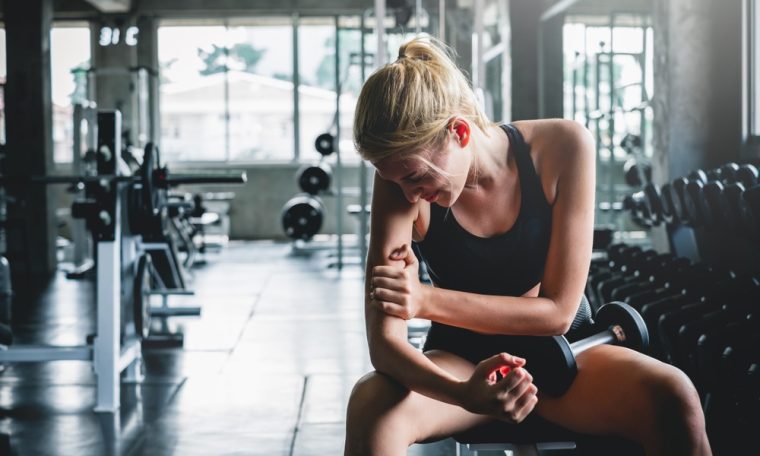
Introduction
In the realm of fitness and physical well-being, encountering muscle cramps during exercise can be a discouraging setback. Exercise muscle cramps, often an unwelcome companion during workouts, can impede progress and hinder the overall enjoyment of physical activities. However, fear not, as we present a comprehensive guide to help you sidestep these muscle cramps and make your fitness journey smoother.
Understanding Exercise Muscle Cramps
Muscle cramps are involuntary contractions of muscles that can cause mild to excruciating pain. During exercise, these cramps can occur due to various factors such as dehydration, electrolyte imbalances, muscle fatigue, or inadequate warm-up. Understanding the root causes is crucial for devising an effective strategy to prevent them.
Hydration Matters
Proper hydration is a cornerstone for preventing exercise-related muscle cramps. Dehydration can lead to imbalances in electrolytes like sodium and potassium, contributing to cramp formation. Ensure you drink an adequate amount of water before, during, and after your workout sessions. Incorporating sports drinks can also be beneficial in maintaining electrolyte balance.
Nutritional Support
A well-balanced diet plays a pivotal role in preventing muscle cramps. Consuming foods rich in potassium and magnesium, such as bananas, oranges, spinach, and almonds, can aid in muscle function and reduce the likelihood of cramps. Additionally, consider consulting with a nutritionist to tailor your diet to your specific exercise routine.
Warm-Up Rituals
Proper warm-up exercises are often underestimated but are critical for preparing your muscles for the demands of more intense activities. A gradual warm-up increases blood flow, enhances flexibility, and reduces the risk of muscle cramps. Include dynamic stretches and light cardiovascular exercises in your warm-up routine to effectively prime your muscles.
Targeted Stretching
Incorporating specific stretches that target muscle groups prone to cramping can significantly reduce the occurrence of cramps. Focus on areas such as calves, hamstrings, and quadriceps. Performing these stretches regularly, both as part of your warm-up and cool-down routines, promotes muscle flexibility and minimizes the risk of cramps.
Optimize Electrolyte Levels
Electrolyte imbalances, especially low levels of potassium and sodium, can contribute to muscle cramps. Consider electrolyte supplementation, either through natural food sources or supplements, to maintain the optimal balance. This becomes especially crucial during prolonged or intense workouts where electrolyte loss is higher.
Gradual Intensity Increase
Gradually increasing exercise intensity allows your muscles to adapt and reduces the likelihood of cramps. Abruptly pushing your body beyond its accustomed limits can lead to muscle fatigue and cramping. Listen to your body, gradually intensify your workouts, and give your muscles the time they need to acclimate.
Pain O Soma 500Mg is a prescription medicine that treats muscle pain in the most effective manner. It also offers quick relief from any discomfort which is caused by the muscle contractions. It provides relief from acute painful muscle to the adults. It also treats skeletal condition in the adults. The medicine should be taken only by a Doctor’s advise.
Adequate Rest and Recovery
Insufficient rest and recovery can contribute to muscle cramps. Ensure you allow your body ample time to recover between intense workouts. Incorporate rest days into your weekly routine, indulge in activities that promote relaxation, and prioritize a good night’s sleep to support overall muscle health.
Introduction
Exercise-induced can be a frustrating hurdle in an otherwise effective workout routine. At times, these cramps can seemingly strike out of nowhere, causing discomfort and disrupting your fitness goals. In this comprehensive guide, we delve into the 10 primary causes of exercise-induced muscle cramps and provide actionable prevention tips to help you overcome this challenge.
Understanding the Causes
1. Dehydration
Dehydration stands as a leading cause of muscle cramps during exercise. When the body lacks adequate fluids, muscles are more prone to spasms and cramping. It is imperative to maintain proper hydration levels before, during, and after your workout sessions.
2. Electrolyte Imbalance
An imbalance in crucial electrolytes such as sodium, potassium, and magnesium can contribute to muscle cramps. Ensuring a well-balanced diet that includes foods rich in these electrolytes is vital to maintain muscle health.
3. Overexertion
Pushing your body beyond its limits can lead to muscle fatigue, increasing the likelihood of cramps. Gradual progression in the intensity and duration of your workouts is essential to prevent overexertion.
4. Poor Warm-Up Routine
A lack of proper warm-up can leave your muscles susceptible to cramping. Incorporating dynamic stretches and light cardio into your warm-up routine helps prepare your muscles for the upcoming workout.
5. Inadequate Blood Circulation
Restricted blood flow to the muscles can trigger cramps. Regular stretching exercises and proper body positioning during workouts are instrumental in enhancing blood circulation.
Prevention Strategies
6. Optimal Nutrition
Consuming a well-rounded diet with a focus on nutrient-dense foods is paramount. Adequate intake of vitamins and minerals, especially calcium and potassium, plays a crucial role in muscle function and can aid in cramp prevention.
7. Proper Hydration Practices
Building on the importance of hydration, it is not just about quantity but also quality. Opt for electrolyte-rich beverages to replenish lost minerals during intense workouts.
8. Regular Stretching Routine
Incorporating a dynamic and static stretching routine into your workout regimen promotes flexibility and muscle elasticity, reducing the likelihood of cramps.
9. Equipment Evaluation
Ill-fitting shoes or poorly adjusted workout equipment can contribute to muscle cramps. Regularly assess and update your workout gear to ensure proper support and alignment, thus minimizing cramp triggers.
10. Professional Guidance
When in doubt, seek guidance from fitness professionals or healthcare providers. A personalized exercise plan, tailored to your body’s needs and limitations, can go a long way in preventing muscle cramps.
Conclusion
Exercise-induced need not be an inevitable part of your fitness journey. By addressing the underlying causes and implementing these proactive prevention strategies, you can pave the way for a smoother and more enjoyable workout experience.
Conclusion
By incorporating these strategies into your fitness routine, you can significantly diminish the risk of exercise-related . Remember, a holistic approach that encompasses proper hydration, nutrition, warm-up rituals, targeted stretching, electrolyte optimization, gradual intensity increase, and adequate rest is key to a cramp-free workout experience. Stay consistent, listen to your body, and embrace a proactive stance against muscle cramps.



